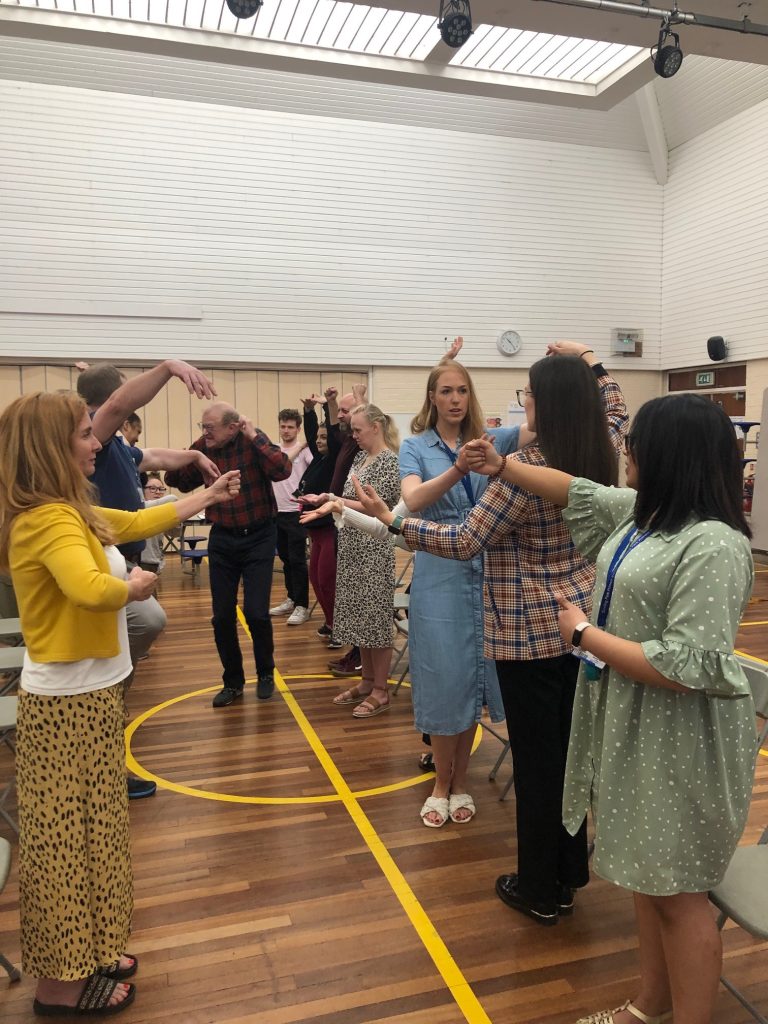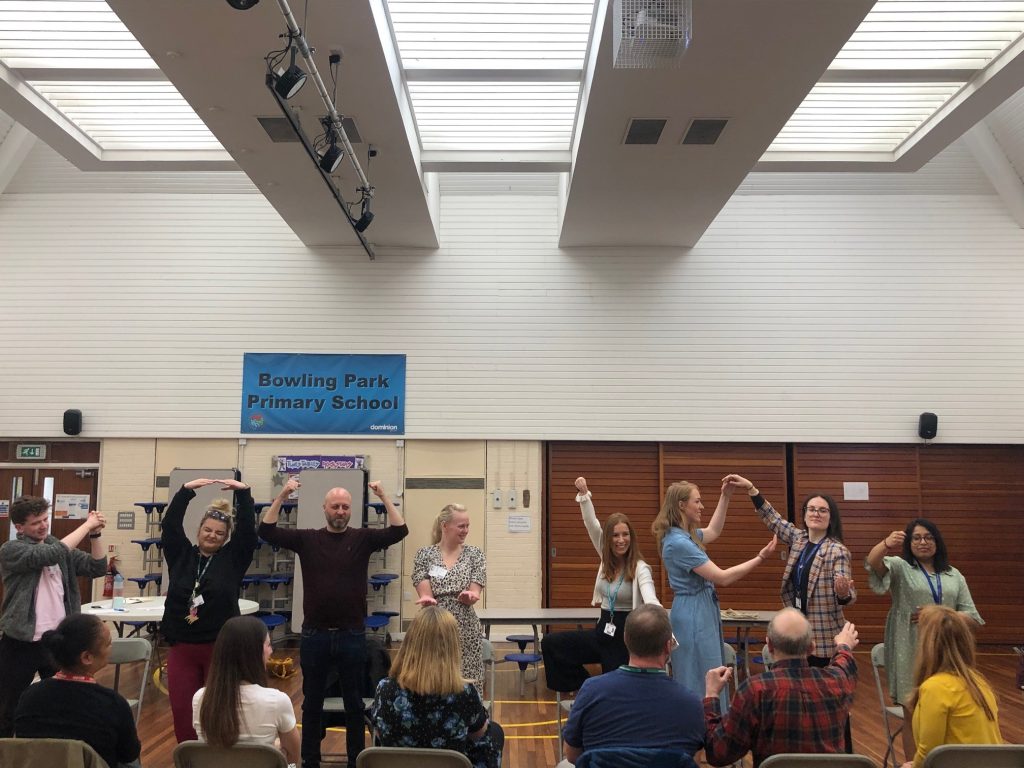Empowering pupil voice through drama
Supported through the Teacher Development Fund (TDF), the Story Exchange project, developed between Bowling Park Primary in Bradford and Story Makers Company at Leeds Beckett University uses drama and storytelling to bring the curriculum to life with an explicit focus on children’s oracy and communication skills. Working with five diverse artists, teachers and children, across eight inner city schools, the project will create imaginative and culturally relevant curriculum opportunities through drama and storytelling with a focus on the foundation subjects. Dr Lisa Stephenson of Leeds Beckett University shares their progress.
The ‘MYBD5’ school partnerships are situated in an economically deprived area of inner-city Bradford with over 3800 children who come from an almost uniquely diverse range of ethnic and cultural backgrounds. Most families in the area do not speak English at home and have limited language development. The schools also have very strong ties to the local community and bring this experience to the project. The collaboration focuses on working with teachers from Year 3 classes, in the first year of the project and Year 4 classes in the second year of the project, across all the partner schools. This will enable children from Year 3 classes to become ‘experts’ in drama teaching in the project’s second year. The five artists use a range of drama-based story making approaches. Artists and teachers initially commented that “these are brave spaces and completely new ways of working.”

Key to the success of our project so far has been our blended approach to professional development, which centres on holding ‘brave and open spaces’ of critical reflection for both teachers and artists. Our coaching model encourages artists and teachers to upload and share recorded phone reflections after they have co-delivered a session onto a shared online platform. Each artist-teacher partnership has an allocated ‘specialist coach’ who then facilitates a recorded response or online meeting to respond to the reflections. Teachers commented that the coaching has ‘provided momentum to the project’. Drawing from evaluations of effective school CPDL (Lofthouse and Rose, 2019), this is not a ‘clean coaching’ model – elements of mentoring, guidance and feedback are integral. The online nature of the feedback has supported a more consistent rhythm throughout Covid-19 disruptions. These components of action research are supported by this triad coaching model. The specialist coach teams meet termly online and feedback insights, positives and tensions across the project, ensuring a strategic overview. Crucially, the themes are then addressed and built on through the in person CPD days, where all partners come together face to face to share practice and plan.
The face-to-face CPD days at the beginning and the end of every term are used to share live practice and act as a mentoring opportunity where we can model best practice and address issues arising from the coaching sessions. We have also embedded our research on coaching and creative pedagogy into these days. Artists and teachers have shared ‘pedagogical tools’ and developed a ‘hybrid-planning’ document for lesson planning which we have adapted to include curriculum requirements, children’s engagement in oracy and creative arts pedagogy. For us, using this consistent language across the project ensures shared understanding whilst acknowledging the different ways in which schools are engaging locally. These elements of the project are all works in progress. We have used the live days to immerse ourselves in story worlds, from forests with a lonely wolf to living beside angry volcanoes. The live days have supported a ‘pedagogy of noticing’ and sharing across the project as well as holding vital space for planning time which is so often eroded in the day-to-day life in schools. This has facilitated the development of a community of practice.

Additionally, we have had fun in this knowledge exchange! Some of the recent insights from coaches’ feedback noted that:
“The ideas that are being co-developed and put into practice are already resulting in benefits for learners including: raised expectations of children, opportunity for children to use language with confidence and to participate in new ways in lessons. Children are being creative and showing a positive mindset. There are already examples of children taking ideas outside of school.”
We are particularly excited as children begin to evaluate the learning across this year. Our curriculum model will be shared across schools through a further online Story Exchange experience next year. Central to this online resource is encouraging oral storytelling across diverse cultures and communities through a range of creative methods such as drama, dance, spoken word and sound. It will encourage children, artists and teachers to share ideas, as well as creating a new curriculum resource model (Stephenson et al, 2021). The story exchange website will invite children to explore imaginative forest settings across next academic year. The resource will also share teachers’ planning across schools and provide an imaginative model of curriculum design, which connects home communities and school.